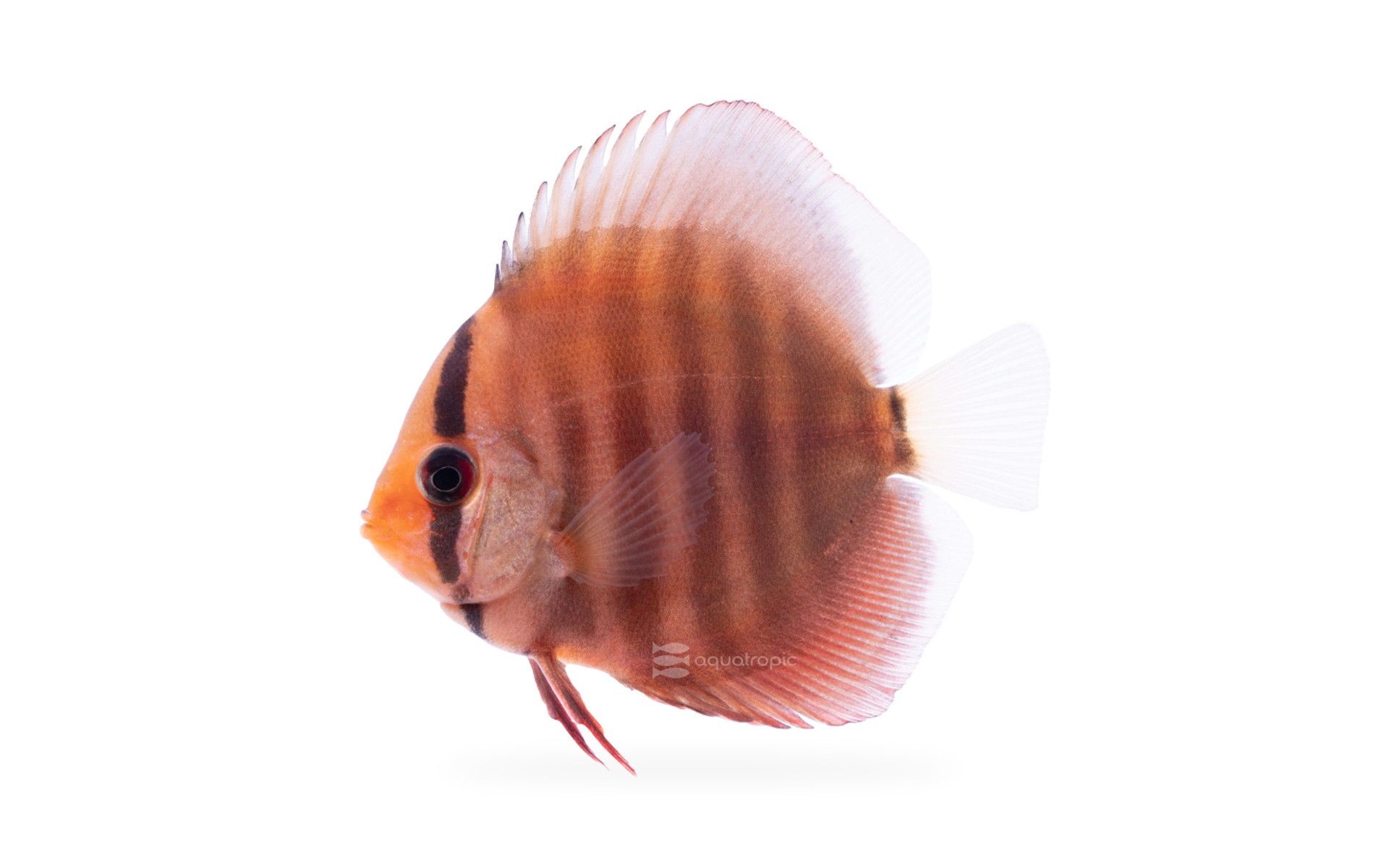A Quick Discussion

The Discus (Symphysodon aequifaciatus) is a member of the Cichlid family. These tall, slender, circular fish they come in a variety of colors and patterns due to being extensively aquacultured at this point. The original wild fish are mostly a cream tan color with dark vertical bars and hints of blue & red around their margins. These fish will reach a size of about eight inches, with bold patterning, colors and a body shape that makes them totally unique in the aquarium hobby world. Discus are naturally found in the Amazon, and some of its tributaries. They like slow moving water with lots of cover and vegetation in the wild. Discus tend to congregate around down trees and branches.
Due to the discus tall body shape, they will require an aquarium at least 20 inches tall. A 55 gallon aquarium is the smallest that should be considered for discus, and a 75 would be better for anyone who is new to keeping them. Discus water is generally low in pH and hardness (dkh), this is important especially if one is hoping to spawn them. Discus are almost exclusively captive bred these days, and the farms that they come from keep their water temperature between 82 and 90 degrees Fahrenheit. When maintaining temperatures this high, a few things happen. First, the amount of oxygen that can be held by water is reduced. This means that keeping discus with plenty of aeration is a good idea. Secondly, metabolisms speed up. That means that fish will need to eat more, and will also produce more waste. It also means that the bacteria will be consuming more oxygen, along with the fish, so again, aeration is of the utmost importance. Due to the need to keep these warm tanks very clean, many people opt for a minimalist design to avoid areas that trap waste and detritus. Discus tanks should be warm, well aerated, and the water kept clean. Discus are slow feeders and need to be kept with more passive fish: angelfish, small tetras and Corydoras that can handle high temperatures are some of the better choices.
Because discus are eight inches in diameter many people feed them food items that are larger than appropriate for their small mouths, and slow feeding habits. They are captive bred, so simple aquarium foods like pellets, flakes, meaty and frozen foods of appropriate sizes should all be accepted. Discus are omnivores, and in the wild will graze on the leaf litter, small invertebrates, algae and plant matter found in their natural habitat. Keep this in mind when selecting a good pellet or flake to offer them.
Breeding discus can be done but are one of the more difficult cichlids to attempt this with. If breeding this fish is something you'll want to have a go at, select an aquarium of at least 75 gallons, and select six or more individuals of similar size and grow them out. You will notice pairs as they form and remove individuals as necessary until you have two or three pairs in the aquarium. They will lay eggs on smooth vertical surfaces like large plat leaves or stones, and they will work together to defend the nest and the babies when they hatch. Once the fry become free swimming they will follow the parents around closely and feed off of the parents slime coat. This fascinating behavior is very rare in the fish world and makes for one of the most interesting experiences one can have as an aquarist. New pairs aren’t generally good parents but over time they will get better at taking care of their young.
Discus now are sustainably bred in captivity in almost every shade of the rainbow. These stunning fish take a bit more care than some other cichlids because of their somewhat unique requirements, but you can be rewarded with one of the most caring parents in all the Cichlid family. Ask your LFS what morphs of captive bred discus are available from Aquatropic today!